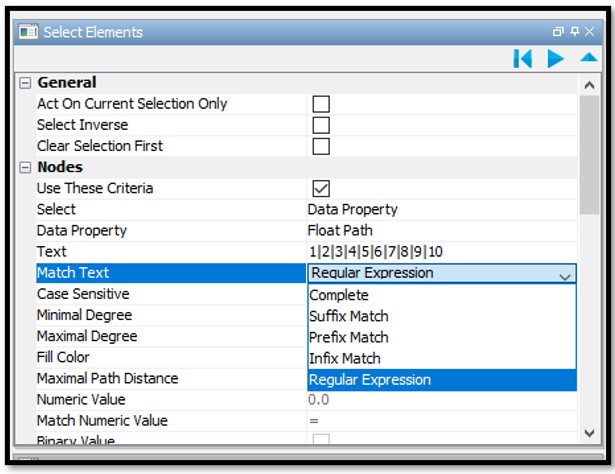Use regular expressions to find nodes or edges with specific text in the “Label” or their “Data Property”. Here are some basic regex patterns

- Wildcard (.):
- Matches any single character except newline.
- Example: “a.c” matches “abc”, “a1c”, “a@c”, etc.
- Character classes [ ]:
- Match any single character within the brackets.
- Example: “[aeiou]” matches any vowel.
- Negated character classes [^]:
- Match any character NOT in the brackets.
- Example: “[^0-9]” matches any non-digit character.
- Quantifiers:
- “*”: 0 or more occurrences
- “+”: 1 or more occurrences
- “?”: 0 or 1 occurrence
- Example: “go*gle” matches “ggle”, “gogle”, “google”, “gooogle”, etc.
- Anchors:
- “^”: Start of the string
- “$”: End of the string
- Example: “^dog” matches strings starting with “dog”.
- Alternation ( | ):
- Acts as an OR operator.
- Example, if you want to select all 10 extracted longest paths then: “1|2|3|4|5|6|7|8|9|10″ matches either path”1” or “2”….”10″.
- Grouping ( ):
- Groups characters together.
- Example: “(ab)+” matches “ab”, “abab”, “ababab”, etc.
- Escaping special characters:
- Use “” before special characters to treat them as literals.
- Example: “*” matches an actual asterisk.
Look Here for more details https://yed.yworks.com/support/manual/yed_edit_find.html
